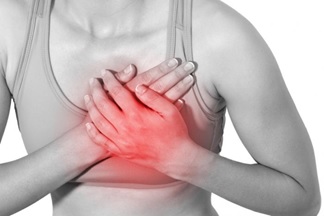Complications Related to Breastfeeding
Breastfeeding can be a beautiful thing; however, there can sometimes be associated complications. Here are some of the most common complications below. If you are experiencing feeding complications, call to make an appointment with one of our Annapolis Pediatrics Lactation Consultants. If you are experiencing pain and discomfort, we also recommend contacting your OBGYN. Engorgement is caused by the onset of copious milk production that exceeds the infants ability to extract milk. Engorgement typically begins 30-72 hours after delivery of the placenta when milk production and volume of milk exceed the storage capacity of the alveoli causing fullness of the breast. This can be problematic if milk removal is compromised. Causes of ineffective milk removal that can lead to engorgement include a shallow latch, flat nipples, nipple anomalies, prematurity, and jaundice. Engorgement results in breast fullness and enlargement, mild tenderness, and tight skin. To prevent engorgement: To treat engorgement: Severe engorgement can lead to breast tissue damage and decreased supply. Please contact your lactation consultant or provider if you are experiencing extreme breast tightness, taught or shiny skin, painful or hot breasts, lumps or hard areas in the the breast, or poor milk drainage. Mastitis is inflammation of the breast most often caused by milk stasis and may involve a bacterial infection. It may result in significant redness and warmth of the breast, intense breast pain, fever, chills, or flu-like symptoms. To prevent mastitis: To treat mastitis: If your symptoms are not improving in 12-24 hours or you are acutely ill, contact your provider immediately. Plugged ducts are localized, tender, pea-sized lumps that are sometimes warm to touch. Fever is not associated with plugged ducts. Causes of plugged ducts include ineffective or poor latch, dysfunctional suck, jaundice, prematurity, over abundant supply, tight bra/clothing, and polycystic breasts. To treat plugged ducts: A bleb is a small pressure cyst formed by milk leading into the surrounding tissue appears as a white dot on the tip of the nipple. This blocks the opening of a lobe of the breast and may obstruct milk flow from the nipple and lead to milk stasis. Symptoms may include extreme pinpoint pain at the site of the bleb. To treat a bleb: 
Engorgement
Mastitis
Plugged Ducts
Bleb
